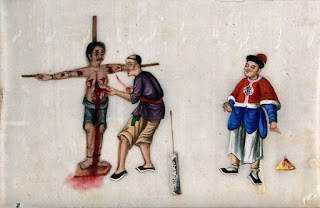As you can see, the name indicates a bit of what it is about.
As you can see, the name indicates a bit of what it is about... world history and facts
First, the condemned man was tied to a post in the middle of a public square, then the executioner, who had knowledge of human anatomy, made small cuts along the victim's body, avoiding cutting veins and arteries. As time passed, he increased the depth of the cuts and also began to cut in more dangerous areas for the victim.
The executioner began to tear off parts of the body and expose them in front of the victim. The idea was to prolong the suffering as long as possible. If after a few hours the victim was still alive, they proceeded to decapitate him.




.jpg)

.jpeg)






Comments
Post a Comment